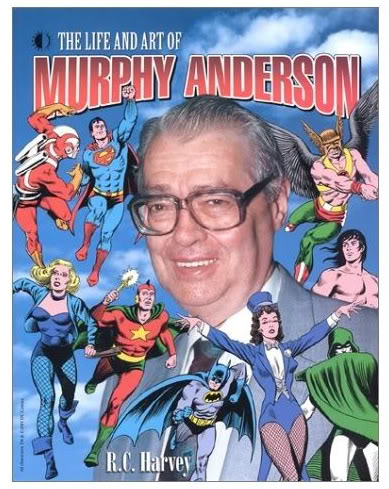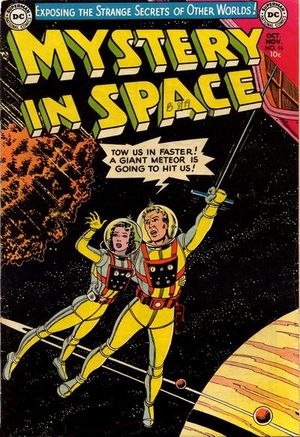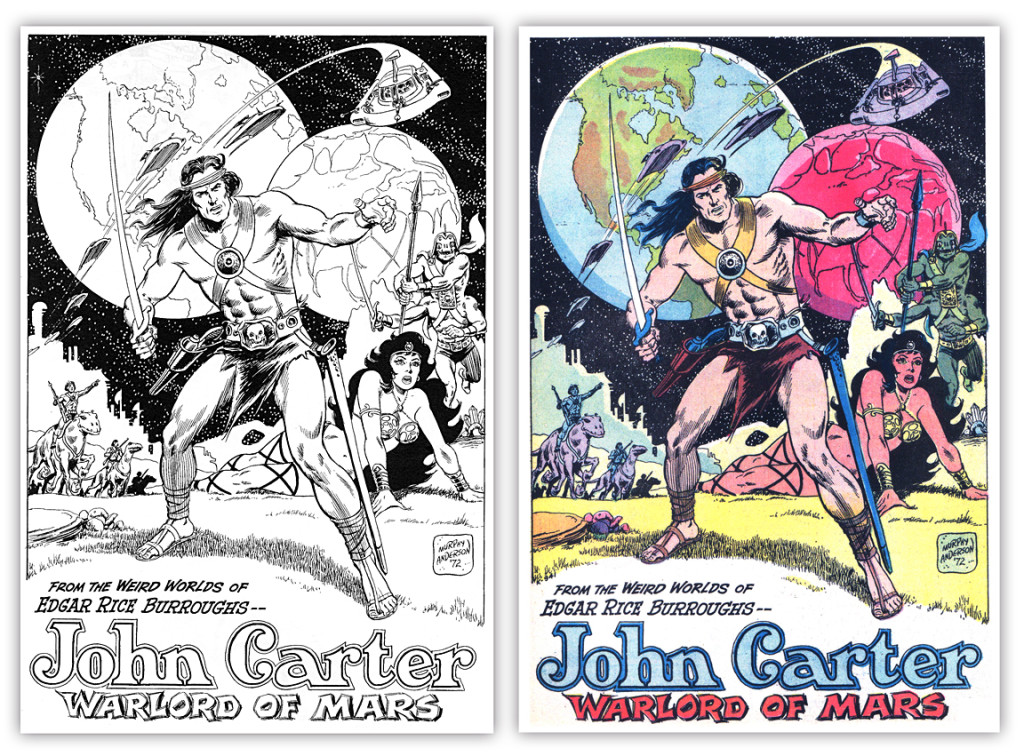Today the comic-book community was saddened by news of the death of legendary SF comic-book artist Murphy Anderson. Anderson was 89.
Murphy Anderson was born July 9, 1926 in Asheville, North Carolina. His mother began reading him comics while he was a preschooler. Inspired by the Buck Rogers comic strip, he wanted to draw comics from a young age. He started drawing in third grade, and began imitating the styles of strips such as Alley Oop and Lil’ Abner. At the age of 14, he won an art contest sponsored by the Greensboro Daily Record.
As the co-editor of his high school paper, Murphy was invited to New York to attend a Columbia Scholastic Press Association convention. While there, he went to Quality Comics to show Busy Arnold samples of his work. He met artists Lou Fine and Jack Cole, and received encouragement but no job offers. He then visited Holyoke Publishing, which gave him an assignment to do a Blue Beetle cover. He imitated Fine’s style for the cover.
Holyoke liked Anderson’s work, but he did not continue with them because he planned to major in art at the University of North Carolina. There he hoped to study under King Features Syndicate illustrator William Meade Prince. But after Prince got sick for a couple weeks, Anderson lost interest.
Anticipating being drafted into World War II, Anderson convinced his skeptical father to borrow him $100 so he could try another round in New York. After initial unsuccessful visits to Marvel, Quality, and Fiction House, he was about to give up and go home when he got a call back from Fiction House editor Jack Byrne offering work. Anderson did most of his work for Fiction Work on their SF comic Planet Comics, where he drew the strip Star Pirate, a character resembling DC’s Starman. Anderson drew most of the Star Pirate strip for Planet Comics #33-51. He also worked on the Suicide Smith strip in Wings Comics and the Sky Rangers strip in Rangers Comics.
Anderson entered the Navy in 1944. He struggled as a radio technician before getting transferred. While stationed in Chicago, he dropped by the offices of publisher Ziff Davis and got some assignments illustrating their pulp magazine Amazing Stories.
In Chicago, Anderson met his future wife Helen. After the war, he remained in Chicago to be near her. Anderson decided that if they were going to get married, he needed to quit freelancing and get steady work. In 1947 he responded to a Chicago Tribune ad reading, “Artist wanted to do an adventure strip.” After a mysterious interview, he realized that the job he was applying for was to serve as a replacement for Dick Calkins, artist for Anderson’s favorite childhood comic strip, Buck Rogers.
Anderson was chosen to draw Buck Rogers, and took a pay cut to $65 a week for a chance to work on the strip. He married Helen in 1948. Unfortunately, Buck Rogers editor John F. Dille proved difficult to work for, and Anderson only remained with the strip until mid-1949.
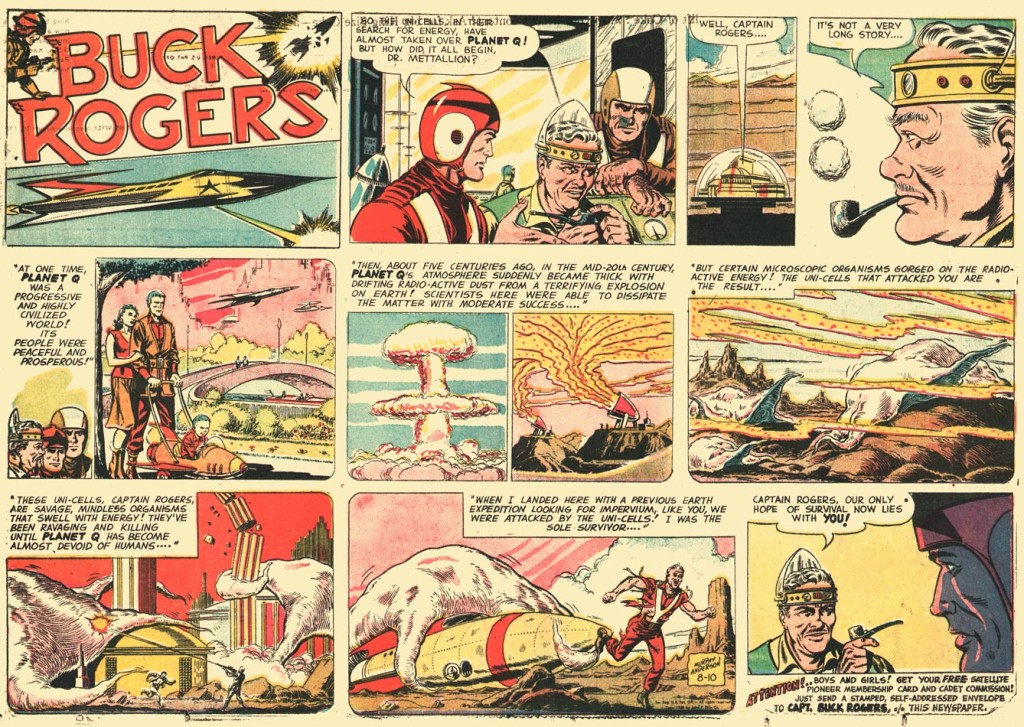
Anderson moved back to Greensboro to help with his family’s taxi business. He continued to take assignments for Ziff Davis, drawing Amazing Stories and Fantastic Adventures.
Jerry Siegel soon started up a new Ziff Davis comic-book line and invited Anderson to come and work with him in New York. After moving to New York, Anderson turned in his first assignment and was told there wouldn’t be another for a week, so he began inquiring at other publishers, visiting DC, EC, Marvel, and Avon. By the time Siegel called Anderson back, he was so busy he couldn’t continue working for Ziff Davis.
Anderson turned down a job at EC and did one comic for Stan Lee at Atlas Comics, along with some work for Pines Publishing and St. John Publications, before settling in long-term at DC. There he would continue to work off and on into the 1980s.
At DC, Anderson took over for Carmine Infantino on the Captain Comet strip starting with Strange Adventures #12 in 1951. However, he soon returned to the family taxi business as his main line of work, while continuing to contribute periodic covers to DC.
Anderson’s taxi business struggled, and he began to take more work for DC again from editor Julius Schwartz. Meanwhile, the launch of Sputnik in October 1957 revived interest in SF comics, and Dille’s son convinced Anderson to return to Buck Rogers from 1957 to 1958.
In 1958, Schwartz mentioned to Anderson that he was working on a new character, who turned out to be Adam Strange. Anderson drew some sketches of Strange for the cover of Showcase #17, introducing what became the character’s costume. However, a Gil Kane cover replaced Anderson’s cover before final publication, although Anderson’s costume design was retained.
At this time, Anderson began inking Infantino on the revival of The Flash. He also inked Mike Sekowski’s Justice League pencils in The Brave and the Bold.
In 1960, Anderson and writer John Broome introduced the Atomic Knights in Strange Adventures #117. The Atomic Knights became Anderson’s favorite assignment.
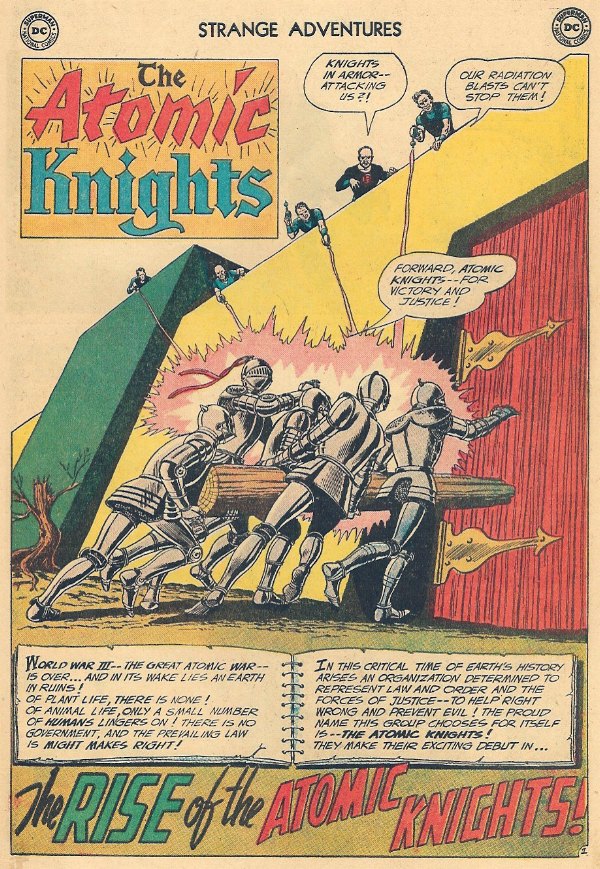
In 1964, Anderson began working with writer Gardner Fox on a new Hawkman series, taking over the Hawkman character from Joe Kubert. Anderson’s sleek rendition of Hawkman became one of his most famous contributions to comics. Fox and Anderson also introduced Zatana in the Hawkman series and revived the Spectre in Showcase #60 in 1966.
During the mid-1960s, Anderson also inked Infantino on Batman and Kane on Green Lantern and Atom. Meanwhile, he proposed a change to standard comic-book page size which enabled two pages to be photographed at one time, an innovation subsequently became an industry standard.
By this time, Anderson had begun to shift from comic books towards commercial art. He joined Will Eisner working on PS Magazine, an Army preventive maintenance comic.
In the 1970s, Anderson inked Curt Swan’s drawings for Action Comics and Superman. He was also assigned to redraw Jack Kirby’s faces for Superman and Jimmy Olsen to bring their look in line with DC’s in-house standards for the characters.
From 1972 to 1974, Anderson got a chance to work on some of his favorite Edgar Rice Burroughs characters from his childhood. He helped DC adapt John Carter of Mars as a backup for the Tarzan and Weird Worlds series from 1972 to 1973, and he worked on Korak Son of Tarzan from 1973 to 1974.
In 1973, Anderson launched Murphy Anderson Visual Concepts, which provided such services as color separation and lettering for comic books. He found this considerably more profitable than drawing comics. His son eventually took over the business.
In the 1980s, Anderson worked on some Quality Comics characters from his youth that DC had acquired rights to, including Black Condor, Uncle Sam, and Dollman.
In recognition for his lifetime contributions to the comic-book industry, Anderson was inducted into the Jack Kirby Hall of Fame in 1998, the Will Eisner Hall of Fame in 1999, and the Inkwell Awards Joe Sinnott Hall of Fame in 2013.
